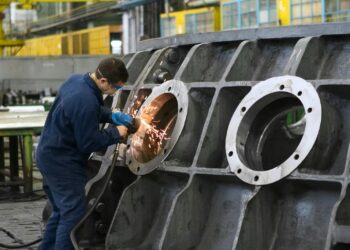Bitcoin mining has always been an energy story. What started as a small-scale hobby has become a global industry consuming as much electricity as some nations. Today, the economics of mining hinge less on Bitcoin’s price and more on two critical choices: power source and hardware efficiency.
The Power Challenge
For mining farms, power isn’t just a line item — it’s the foundation of competitiveness. A few cents difference per kilowatt-hour can determine whether an operation thrives or shutters.
- Grid power: Accessible, but increasingly volatile in cost and availability.
- Renewables (solar, wind, hydro): Growing interest due to cost stability, ESG pressures, and investor expectations.
- Hybrid systems (solar + storage + gas cogeneration): Offering resilience, price stability, and potential long-term savings.
In markets like Texas, Kazakhstan, and parts of Canada, miners are experimenting with hybrid setups that reduce reliance on volatile grids while aligning with sustainability mandates.
The Machine Factor
Hardware selection is just as decisive as power procurement. Modern ASICs (Application-Specific Integrated Circuits) have driven huge gains in efficiency — but also raised new questions for operators:
- Efficiency vs. upfront cost: Flagship machines from Bitmain or MicroBT offer better joules per terahash, but with steep purchase prices.
- Durability vs. turnover: Should farms cycle machines aggressively to capture efficiency gains, or sweat assets longer to preserve capex?
- Cooling and environment: In hot, dusty, or humid regions, immersion cooling and ventilation are no longer optional — they’re survival tools.
The reality: the “cheapest machine” is often the most expensive once energy waste and downtime are accounted for.
ESG and Investor Pressure
Mining is increasingly judged not just by hashrate, but by footprint. Institutional investors, regulators, and even communities near mining sites are asking tougher questions:
- How clean is the power?
- What environmental safeguards are in place?
- Is the operation contributing to grid stress or helping stabilize it through demand-response?
Miners who ignore these pressures risk being left behind, regardless of their efficiency gains.
The Path Forward
The mining farms that succeed in the next decade will be those that:
- Secure low-cost, stable power through renewable and hybrid strategies.
- Deploy high-efficiency, durable machines optimized for their environments.
- Build ESG credibility alongside profitability, turning sustainability into a competitive edge.
In short: the winners won’t just be those who mine the most Bitcoin — they’ll be those who mine it smarter, cleaner, and more efficiently.
💬 What’s your perspective? Are renewables and hybrids the future of mining, or will hardware innovation alone drive the next wave of efficiency? Share your thoughts with EcoBusinessNews — we’re collecting insights from across the sector.
📩 If you’d like to discuss energy strategies for mining or site-level assessments, you can reach me at phil@positivephil.com.



















